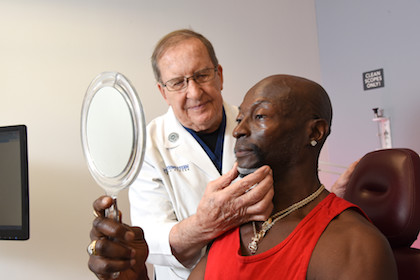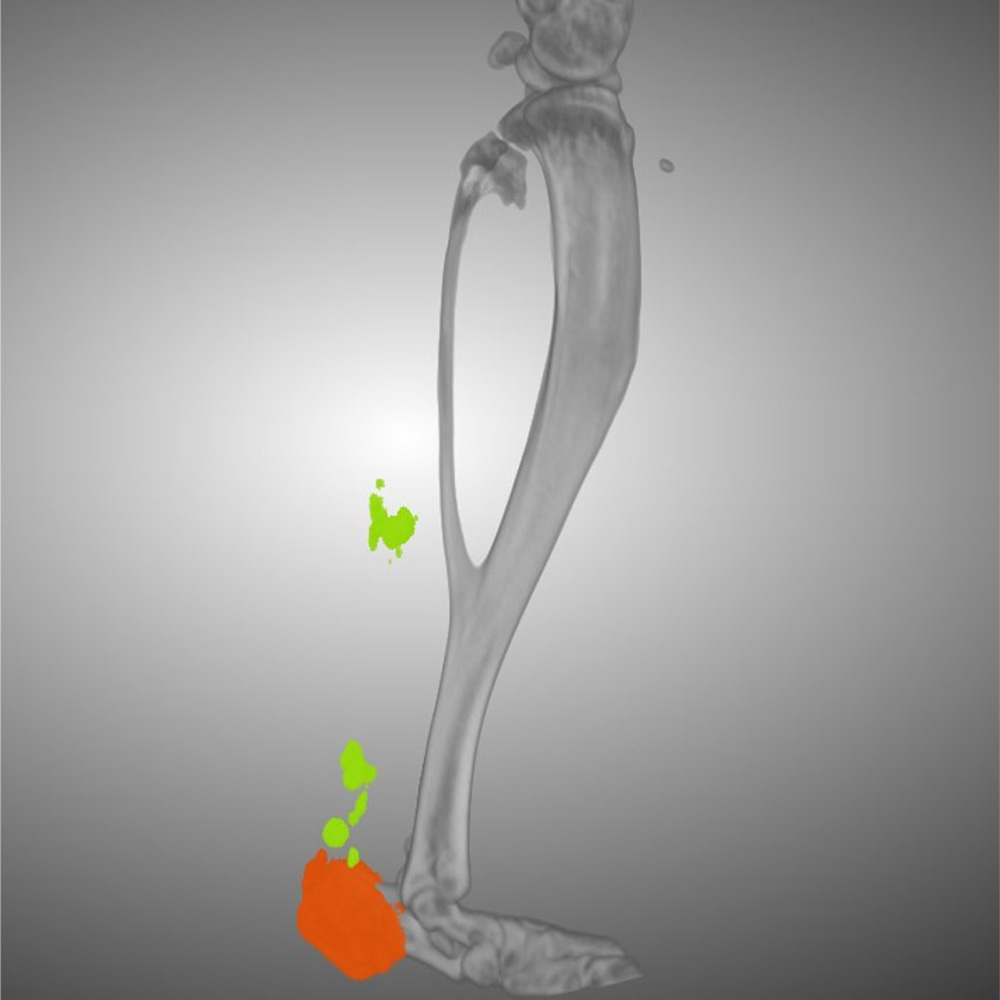Treating one of HIV’s lesser-known afflictions

The biggest problem facing people with HIV is almost certainly the disease itself. But many of those saved by the powerful drugs that came online in the ’90s have found there is a price to be paid for that salvation.
Willie Powell, a former cable installer in Dallas, had to give up his job after testing positive for HIV a decade ago. Then he noticed a new problem. “My face started deteriorating,” the now-52-year-old said. “My whole face was kind of sunk in.”
A few years after doctors began using protease inhibitors to block proliferation of the HIV virus, patients began to acquire a condition called facial wasting or lipodystrophy, an abnormal distribution of fat, said Dr. Jim Gilmore, Associate Professor of Otolaryngology at UT Southwestern and Mr. Powell’s surgeon.
Those taking the drugs started losing fat in their faces, developing a gaunt look, he said. At the same time, some patients saw fat accumulate in unwanted places. About half of those treated with HIV drugs see abnormal fat loss or gain, he said.
This is not just a cosmetic problem, said Dr. Gilmore, who treats HIV patients for facial wasting using silicone facial implants and injectable fillers. UTSW is unique in its comprehensive approach to facial cosmetic restructuring in patients with this condition. Mr. Powell received facial implants over his cheekbones and along the jawline.
“He kind of saved my life,” said Mr. Powell of Dr. Gilmore. “I look normal now and I feel more confident.”
Another patient, Carlos Iglesias, was a 33-year-old flight attendant for American Airlines in 1997 when he learned he had HIV. He was lucky; protease inhibitors had just started entering the market two years before. It took about 10 years for his facial wasting to become very noticeable.
“It’s not a pleasant feeling that you have the look of someone who is HIV-positive,” Mr. Iglesias said. “There’s a stigma to it.”
He heard about the injections and facial implants that could help but did not know if he could afford it. In 2010, Medicare began covering treatments for facial wasting in certain patients with HIV.
Mr. Iglesias’ HIV doctor referred him to Dr. Gilmore. Since then, he has received silicone implants in his cheeks, a neck lift, and injections into his temples of Sculptra, a liquid used to add volume and encourage collagen renewal.
“These patients want to look normal,” Dr. Gilmore said. “It’s gratifying to be able to help these individuals cosmetically, as well as see the improvement in their self-esteem.”




